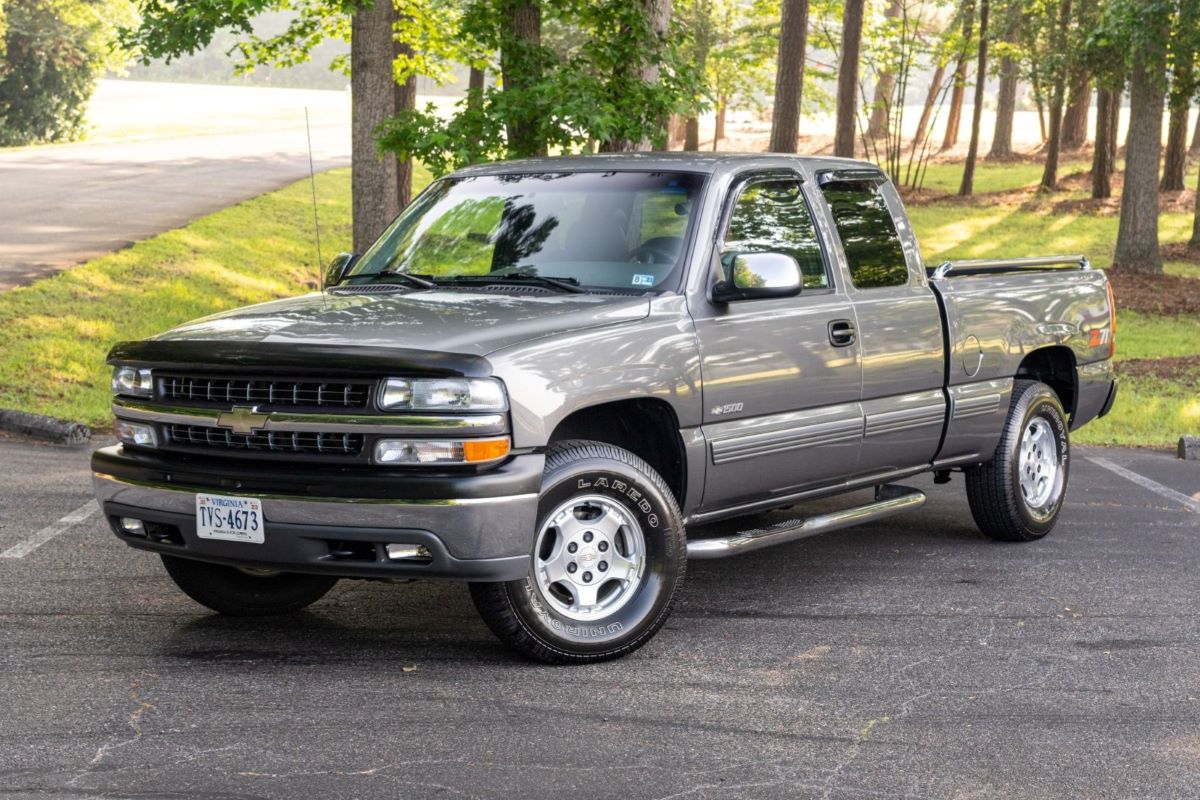In the world of automotive ownership, mileage is one of the most significant factors that influence both the value and the perceived reliability of a vehicle. A car’s odometer reading often becomes a shorthand for how much life it has left—or how many problems might be lurking beneath the surface.
Traditionally, once a car passes the 100,000-mile mark, many buyers start to hesitate. The mental image of an aging vehicle with endless repair bills and mechanical failures often takes hold. However, this generalization is increasingly outdated in today’s era of improved manufacturing, engineering, and materials technology.
Modern vehicles are frequently built to last well beyond 200,000 miles, and some can even surpass 300,000 miles with proper care. This raises an important question for buyers and enthusiasts alike: which vehicles are genuinely capable of thriving beyond 300,000 miles, and which ones become a risky gamble once they reach that point?
Understanding the dynamics behind longevity is crucial. Not all cars are created equal. Factors such as engineering design, build quality, maintenance history, usage patterns, and even manufacturer philosophy can drastically impact a vehicle’s ability to endure.
For instance, some vehicles are designed with heavy-duty components, straightforward mechanical systems, and proven engines that can withstand the test of time.
Others incorporate complex electronics, delicate parts, and experimental technologies that may falter as mileage accumulates. A 300K-mile odometer doesn’t necessarily mean a car is ready for the junkyard; it might instead signify that the vehicle has been well cared for, demonstrating remarkable resilience.
This article explores two sides of this coin. First, we’ll highlight five vehicles renowned for their reliability and durability even after surpassing 300,000 miles. These cars have earned a reputation for being solid investments for buyers seeking dependable transportation on a budget.
They demonstrate that, with diligent maintenance and a bit of luck, certain models continue to deliver great performance and utility far beyond the typical lifespan of most vehicles. From luxury sedans that redefine aging gracefully to rugged workhorses built to last, these vehicles serve as examples of automotive endurance.
Conversely, we’ll also delve into five vehicles that, despite their initial appeal or popularity, become risky propositions once their mileage soars above 300,000 miles. These cars often suffer from specific mechanical weaknesses, costly maintenance requirements, or inherent design flaws that manifest only after extensive use.
The allure of these models—be it for their driving dynamics, style, or technology—can sometimes mask the underlying risks that come with aging components and systems. Buyers considering these cars should proceed cautiously, armed with knowledge about potential pitfalls and the financial implications of ownership.
The difference between a car that can handle 300,000 miles and one that struggles is not simply about the number on the odometer—it’s about understanding the nuances of automotive design, typical wear patterns, and the realities of repair costs.
For example, certain luxury vehicles combine refined engineering with robust mechanical systems, allowing them to perform admirably even after extensive mileage. On the other hand, some sporty or compact cars, while thrilling to drive, might have components that wear out faster or are more expensive to maintain, especially as they age.
Moreover, how a car was treated throughout its life plays a pivotal role. A 300K-mile car that was meticulously maintained with regular oil changes, fluid replacements, and timely repairs often outlasts a lower-mileage car that was neglected or abused.
It’s crucial for buyers to inspect maintenance records, check for signs of rust or structural damage, and have a trusted mechanic evaluate the vehicle before purchase. This article aims to provide insights that go beyond just the numbers and offer guidance on which cars might be worth investing in, even with very high mileage, and which should be approached with caution.
The aim is not to declare certain cars as flawless or others as hopeless, but rather to provide a balanced, informed perspective based on known patterns of reliability and owner experiences.
The automotive landscape is complex and ever-changing, but some truths about durability and longevity remain consistent. By sharing both success stories and cautionary tales, this article hopes to empower readers to make smarter decisions in the used car market, especially when considering vehicles that have already seen extensive road time.
Ultimately, whether you’re a budget-conscious buyer, a car enthusiast fascinated by the endurance of certain models, or simply someone looking for a reliable vehicle, understanding the strengths and risks of high-mileage cars is invaluable.
There’s a certain magic to driving a vehicle that has defied the odds and kept going strong beyond 300,000 miles. But that magic only comes with the right knowledge and expectations. So, buckle up as we explore five 300K-mile cars still worth buying—and five that are just too risky to trust blindly.
Also read: 10 Cars That Are Still Going Strong After a Million Miles
5 300K-Mile Cars Still Worth Buying
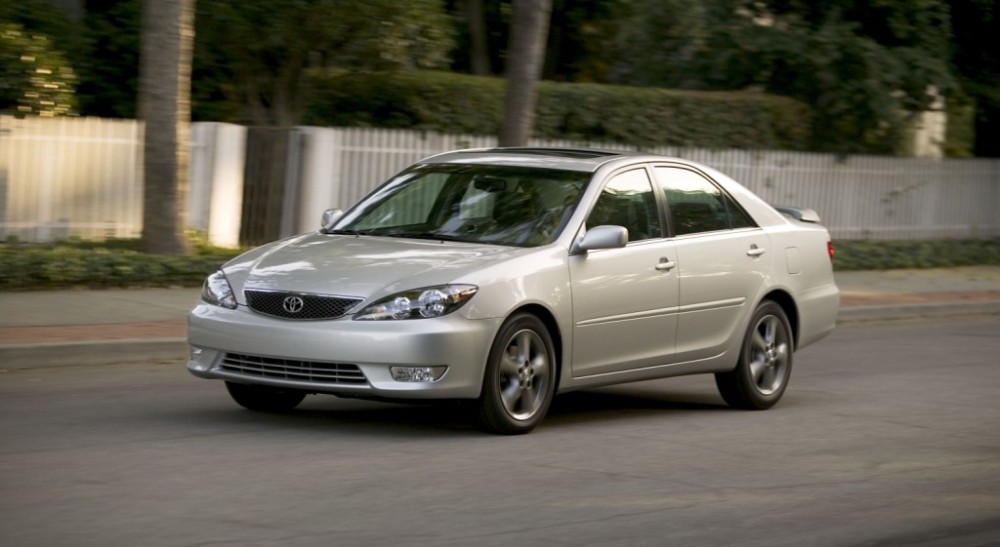
1. Toyota Camry (1998–2011)
The Toyota Camry has long been considered the gold standard in the mid-size sedan category, and that reputation extends far beyond its showroom appeal. Models built between 1998 and 2011 are especially notable for their near-indestructible powertrains and ease of ownership.
These generations include the late XV20, XV30, and XV40 platforms, all of which were designed with mechanical simplicity and longevity in mind. With engines like the 5S-FE 2.2L and the later 2AZ-FE 2.4L, Camrys from this era regularly surpass 300,000 miles when properly cared for. Toyota’s conservative engineering and high-quality components during this era made these cars reliable even under less-than-ideal conditions.
What truly makes the Camry worth buying at such a high mileage isn’t just the engine—it’s the entire ecosystem around it. Toyota produced these models in massive numbers, meaning there’s a surplus of used parts, aftermarket support, and mechanic familiarity.
Whether you’re trying to replace an alternator or fix a window regulator, you’ll find parts are not only easy to locate but also affordable. In most cases, even a complete engine or transmission replacement can cost less than a single monthly payment on a new car, especially if you shop smart or handle basic repairs yourself. There’s a reason Camry owners tend to keep their cars for years: it just makes financial sense.
Comfort and usability are other key factors. Even older Camrys still ride surprisingly well thanks to well-tuned suspensions and comfortable seating. If the struts, bushings, and mounts have been refreshed at some point, the car can feel much newer than its mileage suggests.
Interior materials—while not flashy—are durable and tend to resist the kind of cracking and peeling seen in other cars of the same age. These models also come with just enough creature comforts to feel modern without being overly complicated, such as basic climate control, decent audio systems, and in later years, optional side curtain airbags and stability control.
If you’re considering purchasing a 300K-mile Camry, the most critical factor is maintenance history. Ideally, you want a one-owner car with documented service records that show oil changes every 3,000–5,000 miles, timing belt or chain replacements at proper intervals, and a clean transmission service history.
Also, inspect for rust, especially around the subframe and wheel wells. But if the car passes a visual and mechanical inspection and shows signs of attentive ownership, it can be a dependable daily driver for another 50,000 to 100,000 miles, often without any major issues.
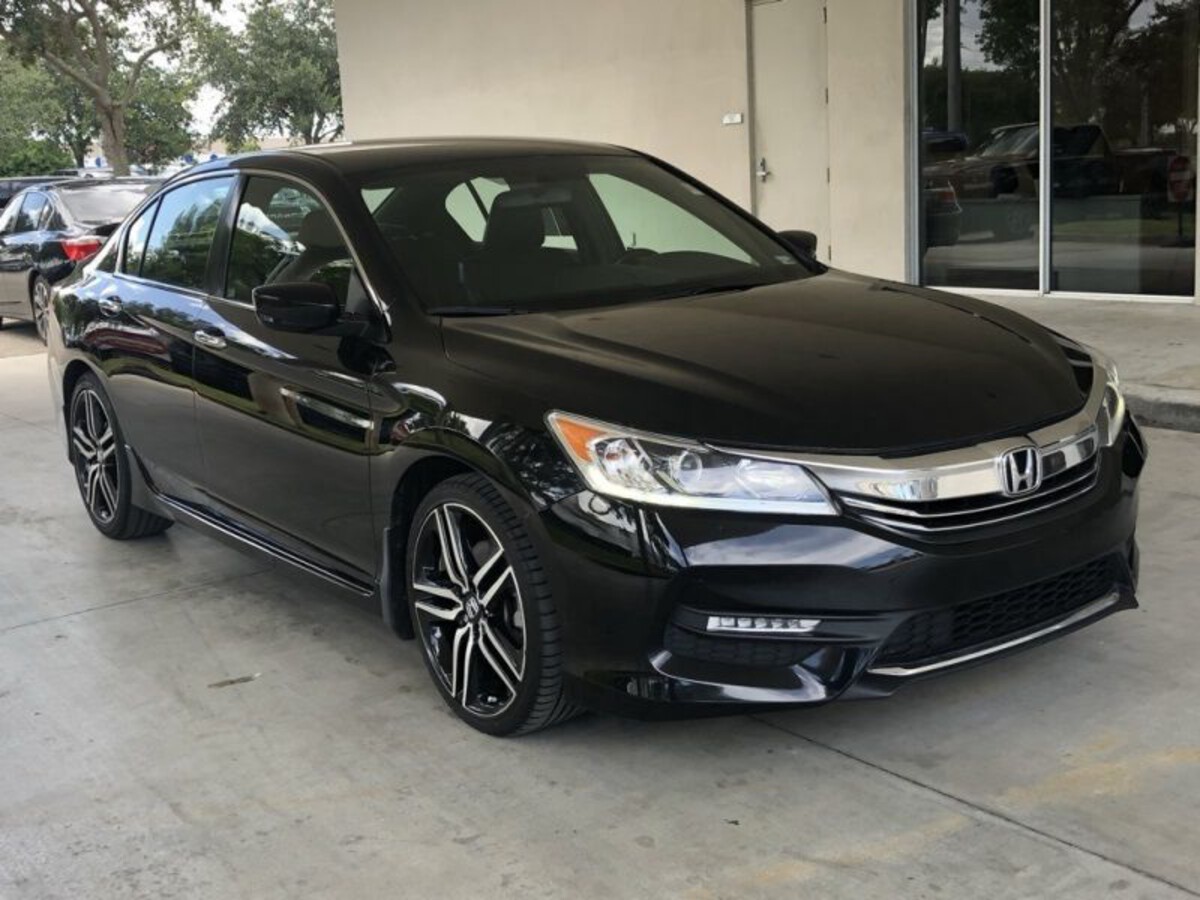
2. Honda Accord (1994–2007)
The Honda Accord is a textbook example of how smart engineering and bulletproof design can yield a vehicle that lasts far beyond expectations. Spanning multiple generations—from the CD chassis of the mid-1990s to the seventh-generation Accord ending in 2007—this model has consistently been praised for its build quality, user-friendly design, and long-term value.
The engines, particularly the 2.4L K24 and earlier 2.2L F22, are famous for running smoothly well past the 300,000-mile mark when basic maintenance is followed. Even the less common V6 variants, while not quite as robust in terms of transmission durability, offer surprising longevity if they’ve been cared for properly.
What makes these Accords stand out at such high mileage is how they age. The car doesn’t just “last” in terms of engine life; it holds its feel, refinement, and performance remarkably well. The suspension design offers a comfortable yet responsive ride, the chassis remains tight even after years of use, and the cabin materials resist the kind of wear and tear that makes many other vehicles feel old.
Leather or cloth, manual or automatic, these Accords were built to endure. Even after 20 years, it’s not uncommon to find an Accord with cold air conditioning, a quiet cabin, and original power accessories that still work like new.
Another major factor in the Accord’s continued value is the widespread availability of replacement parts. Because Honda sold so many of these, from base DX models to loaded EX trims, aftermarket and OEM parts are plentiful. You can find everything from rebuilt transmissions to individual climate control modules with ease.
Plus, many local mechanics and DIYers are well-versed in Accord maintenance, meaning fewer surprise labor costs. The platform also lends itself to easy repairs—oil changes, alternators, brake jobs, and even more complex repairs like timing chain service are relatively straightforward.
For buyers evaluating a 300K-mile Accord, the same principles apply: maintenance is king. Look for consistent oil changes, valve clearance adjustments on older models, and clean transmission shifts. Rust can be an issue in some northern states, especially in rear fenders and underbody, so a visual inspection is crucial.
If everything checks out, an Accord of this era can easily provide another few years of low-cost, reliable driving. For budget-conscious buyers who want to avoid the depreciation of a newer vehicle, a well-preserved Accord is one of the smartest choices you can make.
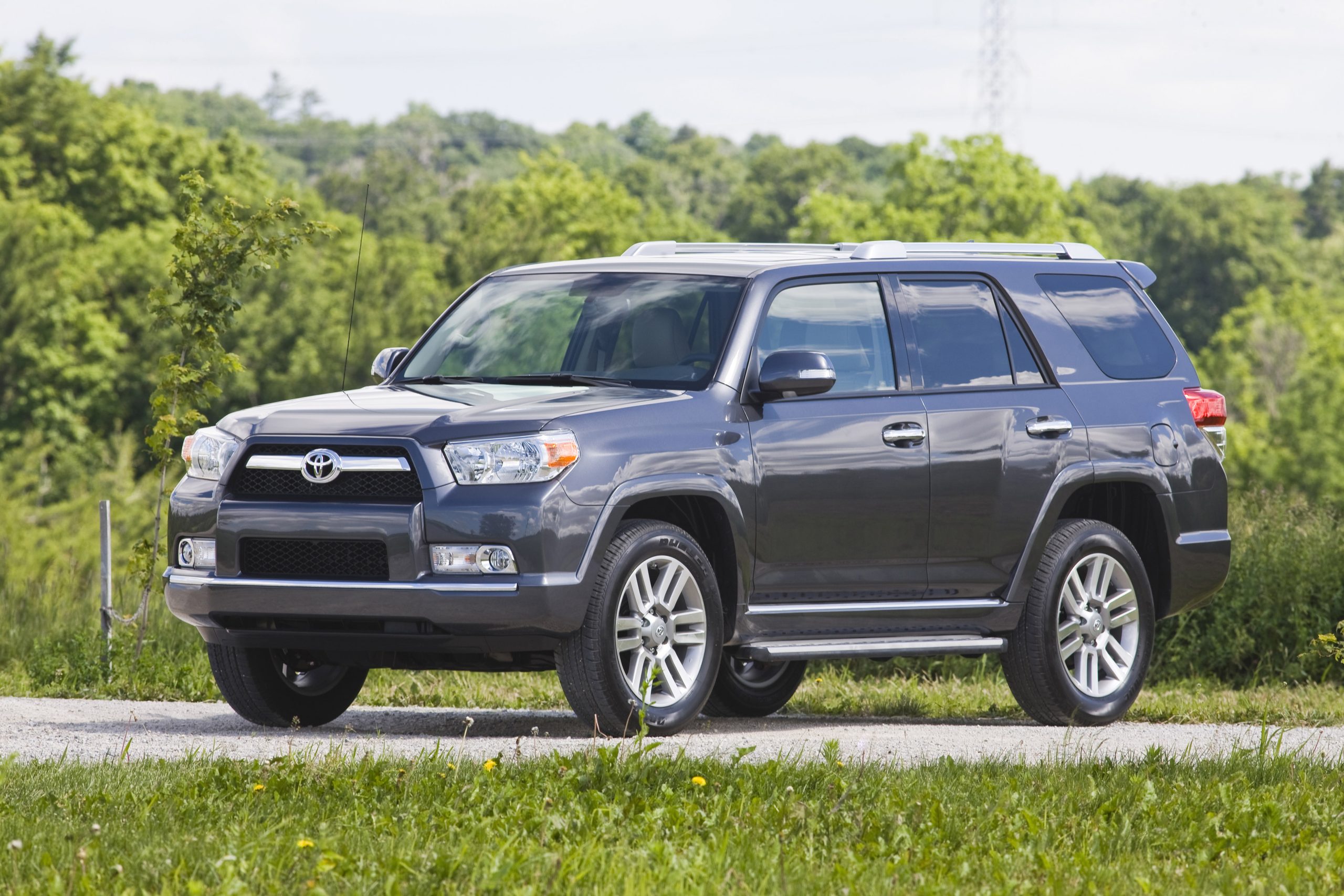
3. Toyota 4Runner (1996–2009)
When you think of vehicles that are built to go the distance—literally and figuratively—the Toyota 4Runner is one of the first names that comes to mind. The third and fourth generations, spanning model years 1996 to 2009, are especially noteworthy for their rugged body-on-frame construction, overbuilt drivetrains, and off-road-ready suspension systems.
Whether equipped with the venerable 3.4L V6 (5VZ-FE) or the later 4.0L V6 (1GR-FE), the 4Runner was engineered to handle abuse, elevation, extreme climates, and heavy loads without breaking a sweat. It’s one of the few SUVs that truly feels like it could keep going forever.
Beyond the mechanical components, the 4Runner also shines in terms of real-world utility. This is a vehicle built with adventure in mind—high ground clearance, optional four-wheel drive, and solid towing capacity make it a favorite among outdoor enthusiasts. It’s not uncommon to find these vehicles used in overlanding builds or as weekend trail warriors, often still relying on their original drivetrain.
The 4Runner’s success stems from its balance between practicality and durability: it hauls gear, climbs mountains, and still functions as a weekday grocery-getter. Its wide track and coil-spring rear suspension provide surprisingly stable on-road manners, while its off-road capabilities remain among the best in its class.
Perhaps one of the most appealing aspects of a high-mileage 4Runner is its strong resale value and support community. Even at 300,000 miles, these trucks command high asking prices—because those in the know understand what they’re getting.
There’s also extensive documentation on common maintenance issues, from lower ball joints to radiator-transmission cooling interactions. Thousands of threads, guides, and YouTube tutorials exist to walk you through almost every conceivable repair or upgrade. The availability of quality aftermarket parts also means you can keep one of these vehicles running well for years, often at a reasonable cost.
Of course, not every 300K-mile 4Runner is a slam dunk. You’ll want to avoid rust-prone examples, particularly from snow belt states. Rusted rear frames have been an issue in some years, and while Toyota offered extended warranties or recalls for specific models, not all were covered.
Transmission and differential health should also be assessed—watch for slow shifting or fluid contamination. But if you can find a clean 4Runner with service records, especially one with newer suspension and drivetrain maintenance, you’re looking at a high-mileage tank that still has plenty of trail (and road) left in it.
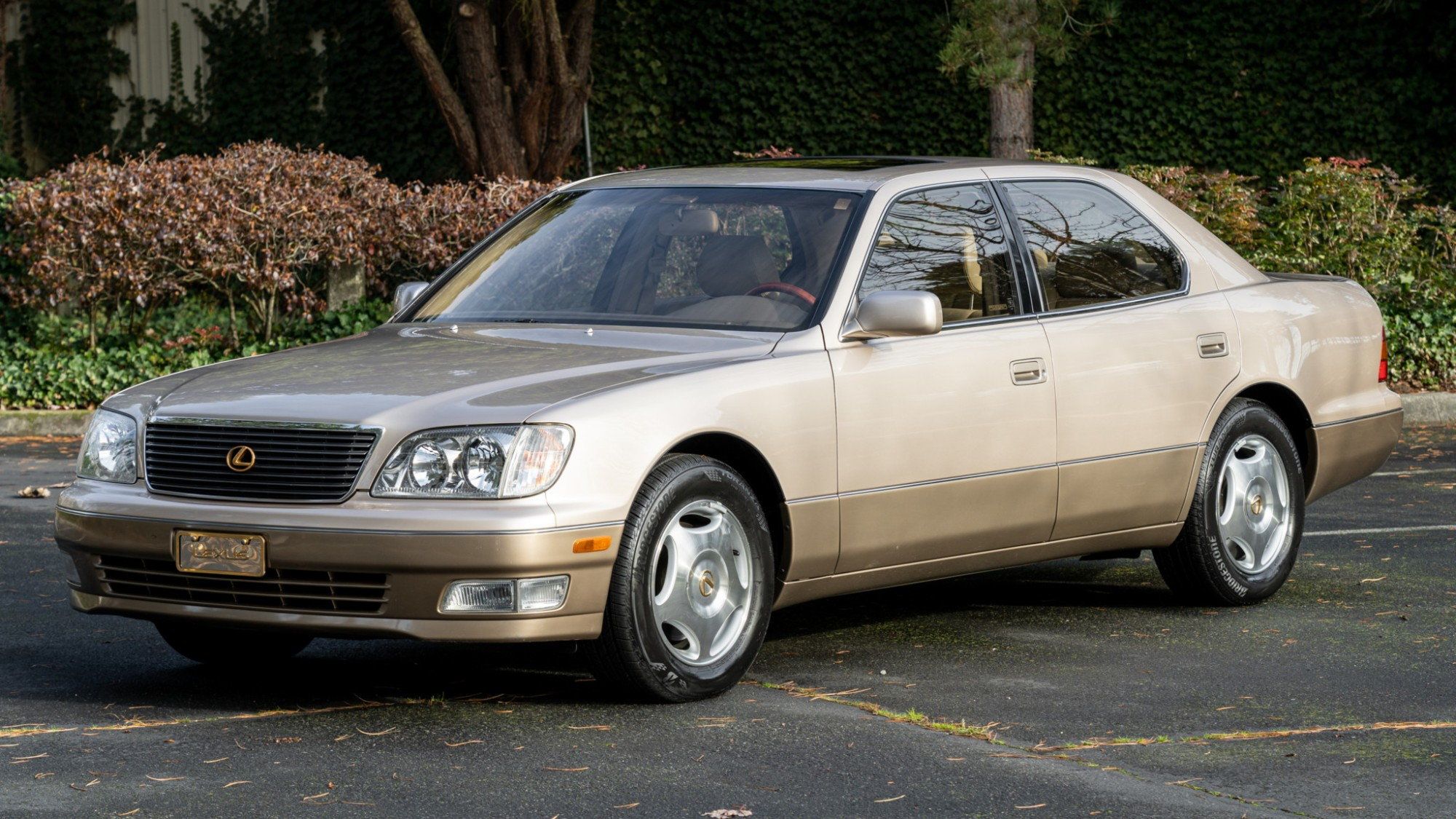
4. Lexus LS400 / LS430 (1990–2006)
The Lexus LS400 and LS430 are, in many ways, the automotive embodiment of overengineering. Designed to challenge and eventually dethrone German luxury cars, these sedans were crafted with a level of precision and quality that was borderline obsessive.
The early LS400 (1990–1999) introduced the world to the 1UZ-FE V8, an engine so reliable it has been used in everything from boats to race cars. The LS430 that followed carried on the tradition with the 3UZ-FE V8 and a more refined ride, greater tech integration, and still unbeatable reliability. When properly maintained, these cars can hit 300,000 miles and feel like they’ve only just broken in.
What makes these Lexus models so appealing at high mileage is how well their quality stands the test of time. The interiors—lavishly appointed with real wood, plush leather, and whisper-quiet cabins—don’t degrade like other luxury vehicles.
Electrical systems are surprisingly resilient, and even complex features like power rear sunshades, heated rear seats, and air suspension components (in higher trims) can last well past 250K miles if not neglected. These cars were built during a time when Lexus still believed in long-term customer satisfaction as a brand-defining goal, not just a selling point.
Driving a 300K-mile LS400 or LS430 doesn’t feel like piloting an old car. The steering is buttery smooth, the V8 is quiet but authoritative, and the ride isolates you from the road in a way that few modern cars can replicate. Fuel economy isn’t spectacular, but that’s not why you buy this car.
You buy it because it makes every trip feel like an occasion—whether you’re going to the grocery store or taking a cross-country trip. The comfort, silence, and dignity of an LS is something even newer luxury sedans struggle to achieve. The most important thing to assess is how the car was maintained.
A high-mileage LS400 or LS430 with meticulous records and a clean body is a far better buy than a lower-mileage example with sketchy history. Watch for oil leaks, timing belt replacement intervals (especially for the LS400), and check whether the suspension is still solid.
Some LS430 models came with optional air suspension, which can be expensive to repair if neglected, so a coil spring version may be more practical for long-term ownership.
Once you’ve verified the car’s mechanical condition, you’ll find very little else to complain about. Transmission failures are rare, electronics hold up surprisingly well, and there’s a wealth of information online about repairs and common issues. Parts are reasonably available and not as expensive as you might expect for a luxury car, especially when you source OEM-equivalent parts or gently used components.
Given its quiet refinement and long-standing reputation for quality, a well-maintained 300K-mile LS offers an elite driving experience at a fraction of its original cost—and without the usual headaches associated with high-mileage luxury vehicles.
In terms of ownership, you’ll likely find yourself shocked by how little you spend on maintenance compared to European counterparts. Lexus built the LS to compete directly with the Mercedes S-Class and BMW 7-Series of its era, and many enthusiasts argue it exceeded them in long-term durability.
The vehicle’s legendary 1UZ and 3UZ engines were designed to run clean, resist internal sludge, and keep ticking well past the expectations of even its engineers. Paired with smooth-shifting automatics and solid drivetrains, these sedans are known for providing consistent, reliable performance regardless of age.
If you want a high-mileage luxury car that feels far newer than it is—and won’t nickel-and-dime you into regret—the LS400 or LS430 is a top contender.
At 300,000 miles, it’s likely seen a lot of road, but with proper maintenance, it’s still got a long way to go. Few cars make aging this graceful, and even fewer do it with this much class, comfort, and mechanical confidence. For under $5,000 in many markets, you’re essentially getting a world-class vehicle that’s more durable than most newer cars on the road.
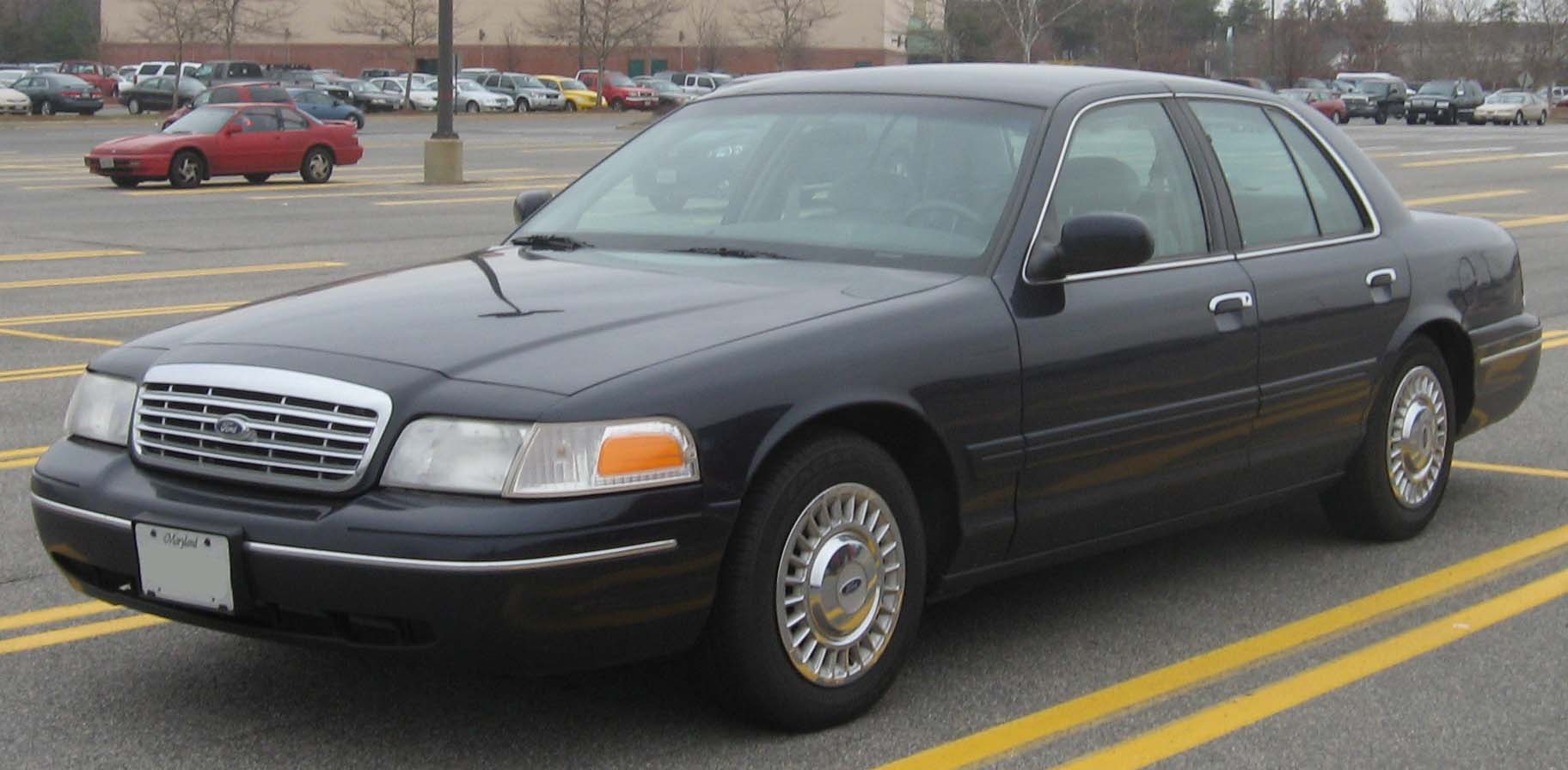
5. Ford Crown Victoria (1998–2011)
The Ford Crown Victoria is the unsung hero of high-mileage reliability, especially in its Police Interceptor (P71) and civilian (P74) variants.
Originally designed for fleet use, taxis, and law enforcement, this full-size, rear-wheel-drive sedan was built with abuse in mind. Its 4.6L Modular V8 engine is known for running long past 300,000 miles, particularly in cars that had regular oil changes and cooling system maintenance.
It’s a car that prioritizes mechanical durability over luxury and flash, and that’s exactly why it’s still such a solid buy even at high mileage.
The Crown Vic’s body-on-frame construction gives it a resilience rarely found in modern sedans. This design allows the car to handle rough roads, curbs, and potholes without falling apart. The Panther platform it rides on is famous for its simplicity and ease of repair, and many mechanics have spent decades working on them.
Whether it’s the suspension, brakes, or transmission, repairs are typically straightforward and affordable. And because of the sheer volume of Crown Vics produced for fleet use, replacement parts are plentiful and inexpensive.
Driving a high-mileage Crown Vic may not feel modern, but it does feel solid. The suspension is soft, the ride is quiet, and there’s a commanding sense of control from behind the wheel. These cars were made to cruise highways and patrol city streets for hours at a time, so they’re well-suited for long-distance driving and everyday use.
While their fuel economy isn’t stellar—expect around 18–24 mpg—it’s not terrible for a full-size V8 sedan, and the tradeoff is longevity and simplicity. Inside, the car may lack the fancy tech of newer sedans, but it has a functional layout, comfortable seats, and a cavernous trunk.
When shopping for a 300K-mile Crown Vic, look for signs that it was part of a government fleet and regularly maintained. Many ex-police units were driven hard but also serviced rigorously, making them great candidates for continued use. Civilian models may have been babied more but could suffer from benign neglect if they changed hands often.
Either way, check the transmission for clean shifts, listen for rear axle hum (a known issue), and ensure that the cooling system has been flushed periodically. If it all checks out, you’ve got yourself a classic American tank that could keep rolling for years to come.
5 300K-Mile Cars That Are Just Risky
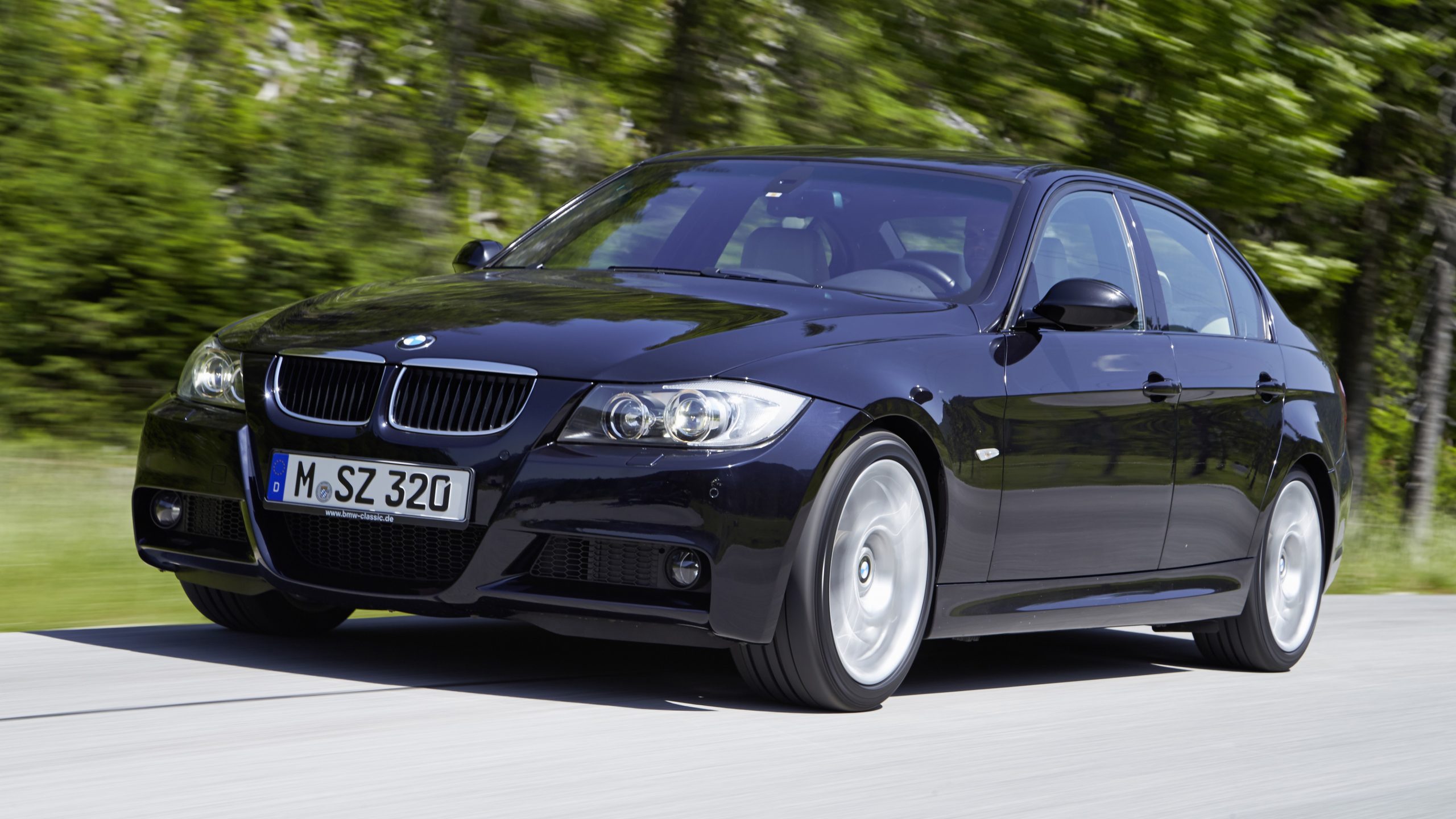
1. BMW 3 Series (E46 and E90 Generations)
The BMW 3 Series, especially the E46 (1999–2006) and E90 (2005–2011) generations, has a passionate fanbase for its dynamic driving experience and premium features. However, when it comes to crossing the 300,000-mile mark, these models become a gamble rather than a sure bet.
While the inline-6 engines found in many 3 Series cars—like the M54 and N52—are known for their smoothness and potential longevity, the devil is in the details.
These cars rely heavily on precision-engineered components that demand frequent and often costly maintenance. The combination of complex electronics, intricate cooling systems, and advanced suspension setups makes the E46 and E90 challenging for high-mileage reliability without deep pockets or a very diligent owner.
One of the most significant concerns with these models at high mileage is the cooling system. BMW inline-6 engines are infamous for cooling component failures—plastic water pumps, fragile radiators, and electric fans all tend to fail after prolonged use. If neglected, these failures can quickly cause catastrophic engine damage.
Moreover, the E90 generation introduced even more electronic controls and engine management systems, meaning any malfunction can be tricky and expensive to diagnose and repair.
Unlike simpler, more rugged engines, BMW’s sophisticated engineering demands thorough and frequent maintenance, including regular coolant flushes, thermostat replacements, and inspection of all cooling system parts.
Suspension and drivetrain components also raise red flags as mileage climbs. The E46 and E90 3 Series are equipped with multi-link rear suspensions and intricate front strut assemblies that wear out over time, often at expensive rates. Control arms, bushings, and ball joints are all prone to failure, and the labor involved in replacing these parts can be substantial.
Additionally, the automatic transmissions, while generally reliable in early E46 models, become more sensitive to service neglect in the later E90s. Transmission fluid changes are crucial but often overlooked by owners, which can lead to premature transmission failure.
Electronics are another area of concern. As the car ages, components like window regulators, door lock actuators, and the infamous VANOS (variable valve timing) solenoids start to fail. The BMW’s complex onboard diagnostics are helpful but require specialized tools and knowledge to fix problems correctly.
This adds to ownership costs and the risk that a “cheap” 300,000-mile BMW might quickly turn into a money pit. Ultimately, while a well-maintained E46 or E90 3 Series can defy odds and live to 300K miles, buying one at that mileage without exhaustive service records and a thorough pre-purchase inspection is a risky proposition.
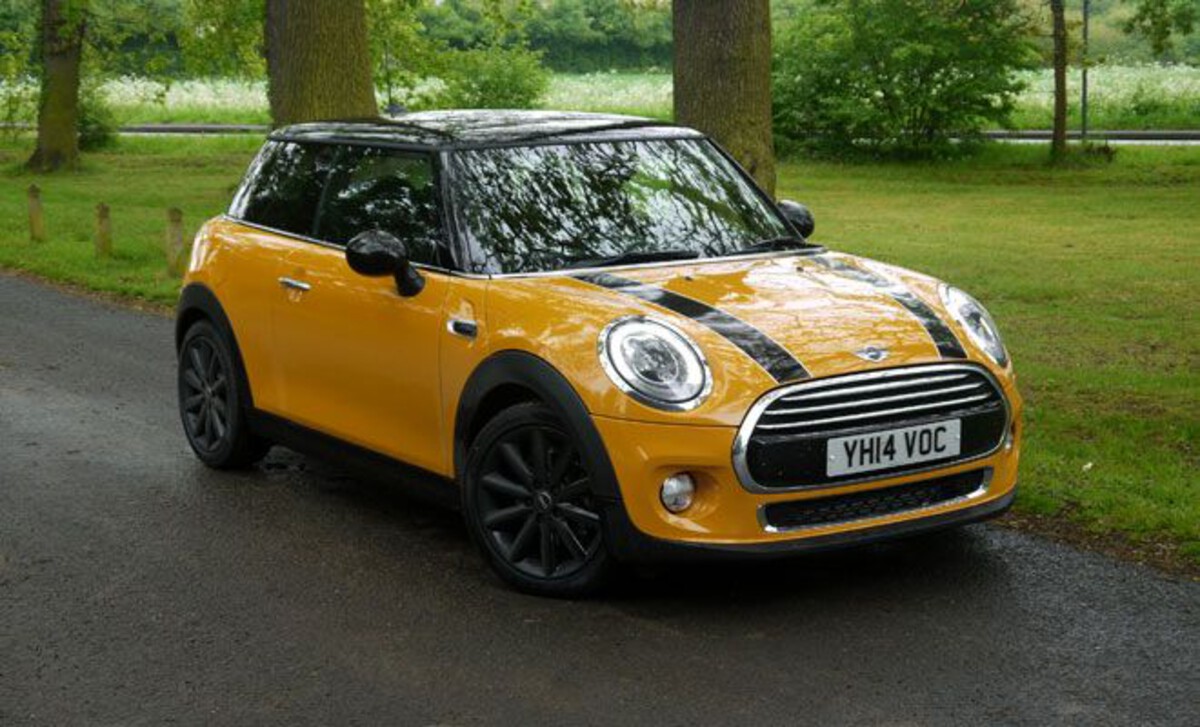
2. Mini Cooper (2002–2013)
Mini Coopers of the early 2000s to early 2010s bring charm, sporty handling, and iconic style, but their reliability at high mileage leaves a lot to be desired.
These cars, especially the first-generation R50 and R56 models, were engineered with European performance priorities—tight handling, turbocharged engines, and distinctive styling—but their mechanical complexity and some design compromises make them less ideal candidates for the 300,000-mile club.
Problems with the high-pressure fuel pumps, turbochargers (in turbocharged versions), and cooling systems are well-documented and can be very expensive to fix once these components fail.
Turbocharged versions, in particular, present additional challenges. The turbo systems require regular oil changes with high-quality synthetic oils and careful maintenance to avoid premature failure. The wastegate, turbo seals, and intercoolers are known weak points, and replacement costs are significant.
Even naturally aspirated Minis struggle with electrical gremlins—faulty sensors, problematic wiring harnesses, and aging control modules can cause frequent warning lights and drivability issues. These problems tend to worsen past 150,000 miles but become glaring at 300,000 miles if proper maintenance hasn’t been followed.
The suspension setup, while sporty and fun, also suffers from durability issues. Rubber bushings, strut mounts, and steering components wear out rapidly and are expensive to replace due to tight packaging and specialized parts.
Many owners report a “clunky” feeling as suspension components degrade, which not only affects ride comfort but can create safety concerns if neglected. Furthermore, the timing chain tensioners and guides, especially in early N12 and N14 engines, are known failure points that can cause catastrophic engine damage if ignored.
Finally, the cost and difficulty of maintaining a high-mileage Mini should not be underestimated. Parts are often imported and pricey, and not every mechanic is familiar with the unique quirks of Mini engineering. Repairs can require specialized tools and procedures, which can increase labor costs substantially.
While the Mini Cooper is beloved for its personality and agility, when it hits 300,000 miles, it becomes a car that requires an expert hand and a generous budget to keep running well. For most buyers, this combination translates into a risky investment.
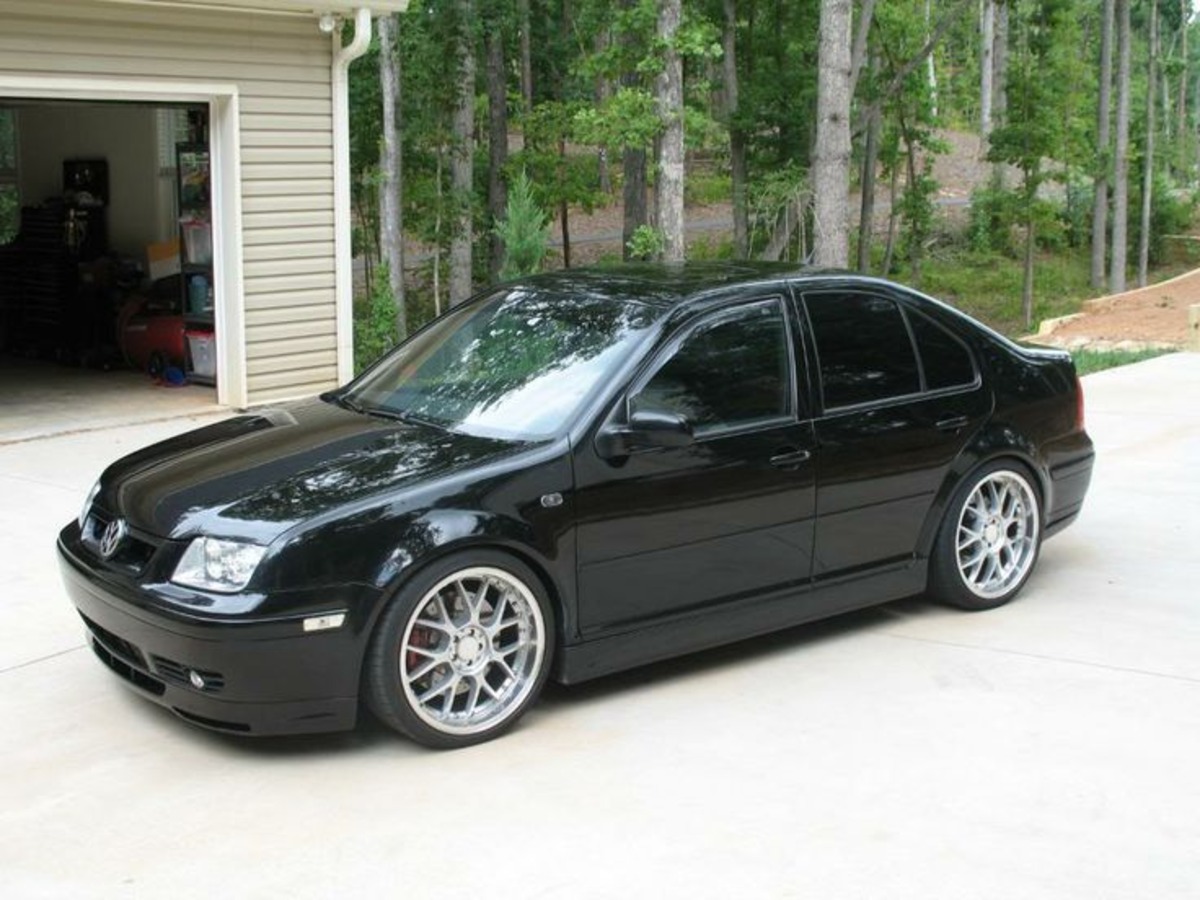
3. Volkswagen Jetta (Mk5 and Mk6, 2005–2018)
The Volkswagen Jetta Mk5 and Mk6, spanning roughly from 2005 through 2018, offer European styling, decent interior quality, and solid driving dynamics. However, their reliability at very high mileage—approaching or exceeding 300,000 miles—is inconsistent and fraught with potential pitfalls.
The gasoline and diesel engines powering these models, including the 2.0L TDI and the 2.5L inline-5, are often the biggest sources of trouble. Many owners have reported issues with the timing chain tensioners, water pumps, and high-pressure fuel pumps, especially on the TDI diesels, which can lead to expensive repairs or outright engine failures.
The direct injection gasoline engines, particularly the 2.5L inline-5, suffer from carbon buildup on intake valves, leading to rough idle, loss of power, and poor fuel economy over time. This carbon issue is difficult and costly to correct at high mileage, requiring walnut blasting or similar intensive cleaning procedures.
Furthermore, the DSG (dual-clutch) automatic transmissions found in many Jettas, while praised for their quick shifting, have a reputation for clutch pack failures and mechatronic unit issues. These transmissions can be extremely expensive to repair or replace, especially if they have not been serviced properly throughout the car’s life.
Electronics and interior components also deteriorate with age in the Jetta, particularly in the Mk5 generation. Issues such as failing door lock actuators, malfunctioning power windows, and erratic dashboard warning lights are common complaints.
The complexity of the onboard computer systems makes DIY troubleshooting difficult and often necessitates dealership visits or specialized diagnostic tools, driving up ownership costs.
Rust and corrosion, while less widespread than in some other cars, can also affect Jettas in certain climates. Wheel arches, door sills, and undercarriage components are areas to watch. Additionally, suspension components tend to wear prematurely, especially in models with sportier suspensions.
Control arms, bushings, and struts often require replacement around the 150,000-mile mark, and if neglected, the problem compounds as mileage climbs. All of these factors make purchasing a 300,000-mile Jetta a gamble that can quickly become expensive and inconvenient.
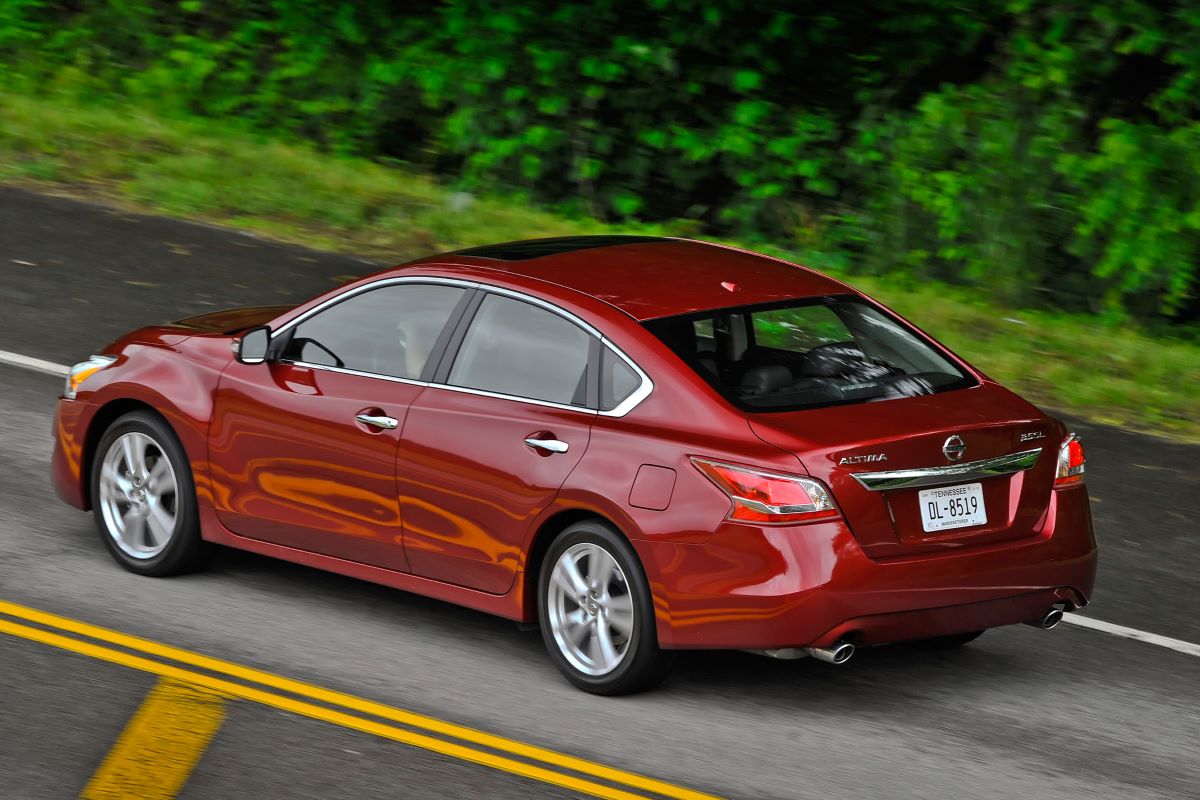
4. Nissan Altima (2007–2012)
The Nissan Altima, particularly the fourth and fifth generations produced from 2007 to 2012, has been a popular family sedan choice, but at very high mileage, it’s notorious for some significant mechanical and reliability issues that make it risky for buyers.
The 2.5L QR25DE four-cylinder engine, while reasonably efficient, suffers from excessive oil consumption in many examples, especially as mileage climbs.
This issue, if not carefully monitored and addressed, can lead to severe engine damage and even premature failure. The V6 versions, though more powerful, have their own sets of problems, including timing chain issues and expensive timing chain tensioner replacements.
Transmission problems are another major concern with these models. Many Altimas are equipped with continuously variable transmissions (CVTs), which have a mixed reputation for longevity. While some CVTs run well past 200,000 miles, many fail prematurely, particularly if they haven’t been serviced regularly or subjected to harsh driving conditions.
A failing CVT can mean a costly transmission rebuild or replacement, sometimes exceeding the value of the car itself. Even conventional automatic transmissions in some trim levels have been known to suffer from shifting hesitation or premature wear.
Interior and electrical reliability also deteriorate at higher mileages. Problems with power window regulators, door locks, and dashboard electronics frequently crop up, contributing to an overall decline in user experience. The Altima’s interior materials are average at best and often show significant wear and tear after years of use, which may not bother everyone but does factor into long-term ownership satisfaction.
Rust, while generally not as big a problem as on older vehicles, still occurs in some regions and should be carefully inspected. Suspension and steering components also wear out around the 150,000 to 200,000-mile mark, and neglecting these systems can lead to safety issues.
Given all these factors, a Nissan Altima approaching or surpassing 300,000 miles is a car that demands detailed inspection and cautious budgeting for repairs, making it a riskier buy for those who want reliable, low-maintenance transportation.
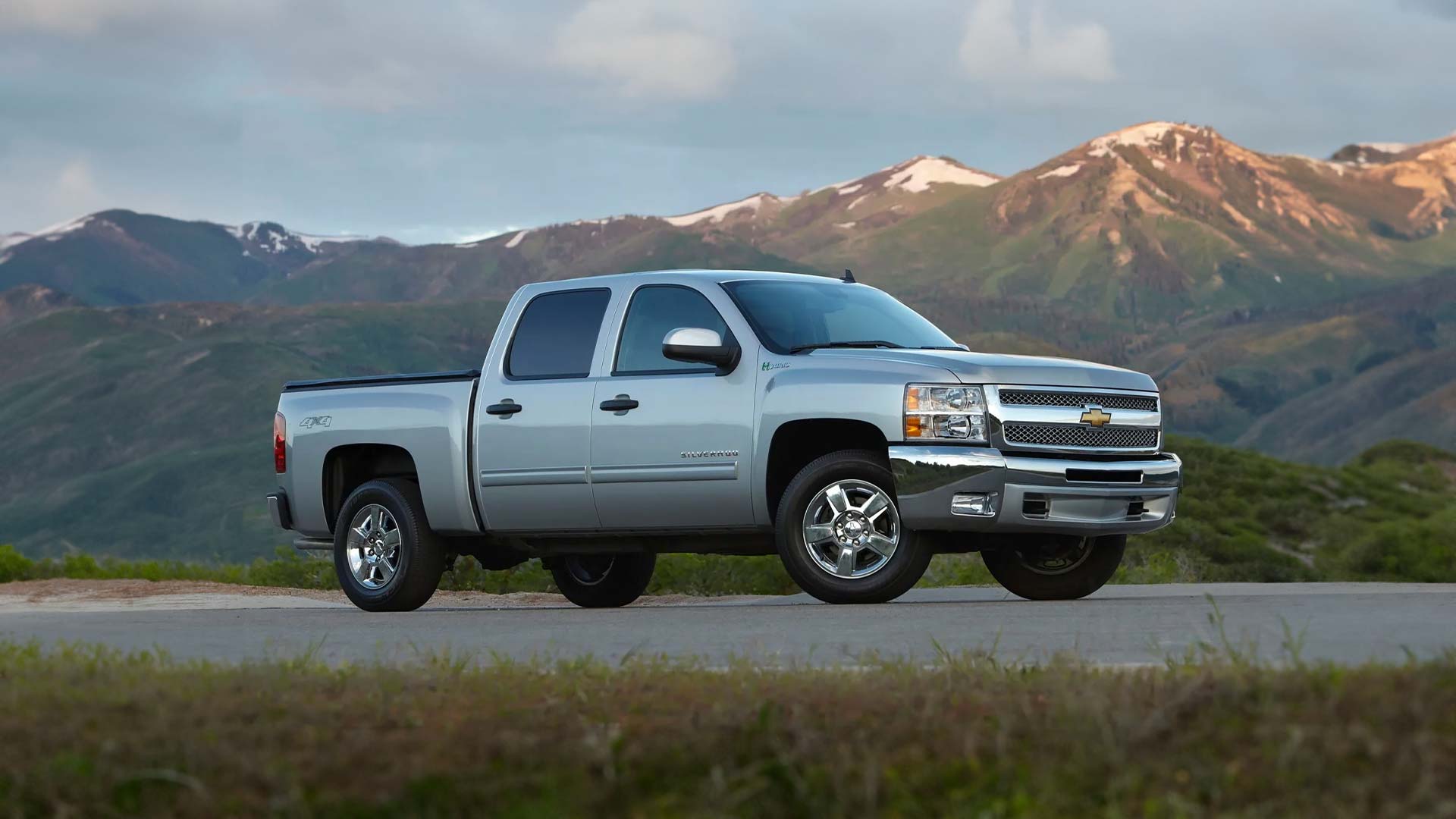
5. Chevrolet Silverado 1500 (2007–2013)
The Chevrolet Silverado 1500 is a staple in the American full-size pickup market, and while many trucks can go well beyond 300,000 miles, Silverados from the 2007 to 2013 era come with some known trouble spots that make high-mileage examples more uncertain purchases.
The 4.8L and 5.3L V8 engines powering these trucks are generally durable, but issues such as lifter failures, intake manifold gasket leaks, and spark plug problems are common after prolonged use. Trucks that have been used heavily for towing or hauling are more prone to accelerated wear on these components.
One of the biggest concerns with high-mileage Silverados is the transmission. The 4L60E and 4L70E automatic transmissions used during these years are known for their occasional shifting problems, overheating, and eventual failure if the transmission fluid hasn’t been changed regularly.
Repairs or replacements are costly and time-consuming, which can turn a seemingly good deal into a money pit. Furthermore, the trucks’ transfer cases and differentials require regular maintenance, especially in four-wheel-drive models, and neglecting these can cause expensive drivetrain damage.
Suspension wear is another issue that becomes more pronounced after many miles. Ball joints, control arms, and bushings often show significant deterioration and can affect both ride quality and safety.
Rust, particularly in trucks used in snowy or coastal areas, can compromise the frame and body panels, which is a serious concern on older pickups given their heavy-duty use. Because the Silverado is often used for work, it’s common to find trucks with hard service histories that accelerate wear and tear beyond what the odometer suggests.
Electrical gremlins and interior wear are less common but still possible, especially in high-mileage models that have seen daily use over many years. Power windows, locks, and infotainment systems might begin to fail, but these issues are generally less critical than mechanical ones.
Ultimately, while the Silverado 1500 can be a capable high-mileage vehicle, buyers need to be wary of specific weak points and ensure that critical maintenance has been performed. Without that, a 300K-mile Silverado can become a risky and costly gamble.
Also Read: 5 Cars You’ll See at 300K Miles and 5 You’ll Never See Again
In the vast and varied world of used car buying, high-mileage vehicles occupy a unique and sometimes misunderstood space. Crossing the 300,000-mile threshold can either be a testament to a car’s exceptional engineering and upkeep or a flashing warning sign of impending mechanical failure and costly repairs.
This article has examined both ends of that spectrum, showcasing five vehicles that have proven their ability to run reliably well beyond 300,000 miles and five that, despite their appeal, tend to become risky investments once they reach such mileage.
The first group of vehicles, including legendary models like the Toyota Corolla and Lexus LS series, illustrate the power of quality engineering combined with rigorous maintenance. These cars were designed with longevity in mind, featuring durable engines, simple yet effective mechanical systems, and in many cases, conservative powertrains that prioritize reliability over raw performance.
Their owners often report examples still running strong at well beyond 300,000 miles, with relatively manageable maintenance costs. These cars remind us that longevity is achievable and that a high odometer reading doesn’t necessarily equate to the end of a vehicle’s useful life.
Such cars tend to reward owners who are proactive in their upkeep, sticking to recommended service schedules and addressing minor issues before they become major problems. They often have widespread availability of parts and a community of enthusiasts or mechanics who understand their quirks and maintenance needs.
This accessibility helps keep repair costs reasonable, which is crucial for older vehicles. For those willing to invest the time and care, purchasing one of these models at high mileage can provide exceptional value, combining low purchase price with surprising reliability and comfort.
On the other hand, the vehicles categorized as risky at 300,000 miles—like the BMW 3 Series E46/E90 or the Mini Cooper—highlight the challenges inherent in certain designs and engineering choices. These cars often rely on complex electronics, precision-engineered components, and high-performance parts that demand more attentive maintenance and costly repairs as they age. Their systems can be unforgiving if neglected, and when critical parts fail, the cost and complexity of fixing them can quickly spiral out of control.
For example, the intricate cooling systems of BMW engines, or the turbocharged setups in Minis, are known trouble spots that frequently emerge after years of use, often requiring expensive repairs that can deter average buyers.
Additionally, some cars in this category are prone to recurring issues—whether it’s transmission problems, electrical gremlins, or suspension wear—that make ownership unpredictable. The financial risks increase substantially when these vehicles reach or exceed 300,000 miles, especially if their maintenance history is incomplete or uncertain.
The key takeaway from this examination is that mileage alone is not the definitive measure of a vehicle’s value or reliability. A 300,000-mile odometer reading should trigger a thorough evaluation of the car’s history, condition, and design vulnerabilities rather than a knee-jerk rejection.
Buyers need to consider not just what model they’re looking at, but how the car was used and cared for throughout its life. Well-maintained, simple, and robust vehicles tend to age gracefully, while those with intricate systems and known weak points become more prone to breakdowns and expensive repairs as mileage accumulates.
Moreover, the decision to purchase a high-mileage vehicle should be guided by realistic expectations. While some cars can offer many more years of reliable service, others may be best suited for enthusiasts or experienced owners who are willing and able to undertake or finance necessary repairs.
For those less mechanically inclined, opting for models known for toughness and straightforward maintenance often results in a more satisfying ownership experience.
This balance between risk and reward is at the heart of buying any used car but becomes even more critical when dealing with vehicles that have surpassed what many consider the “typical” lifespan.
Investing in a reliable 300K-mile car can mean getting a bargain and years of dependable transportation, while falling into a risky purchase can lead to a cycle of frustration and unplanned expenses.
In conclusion, the landscape of high-mileage vehicles is nuanced and demands careful consideration. By understanding which cars have a track record of endurance and which tend to become liabilities, buyers can make smarter, more informed choices. Whether seeking a trustworthy daily driver, a classic example of automotive durability, or just the best bang for the buck, knowledge is the best tool to navigate the used car market successfully.
With proper research, inspection, and realistic expectations, a 300,000-mile car doesn’t have to be a gamble. It can be a testament to the vehicle’s build quality, a reward for good maintenance, and an opportunity to own a car that has already proven its resilience.
So, take the time to weigh the pros and cons presented here, dig deep into the history of any prospective purchase, and drive forward with confidence that the car you choose—whether a tried-and-true survivor or a model to avoid—fits your needs and your peace of mind.

